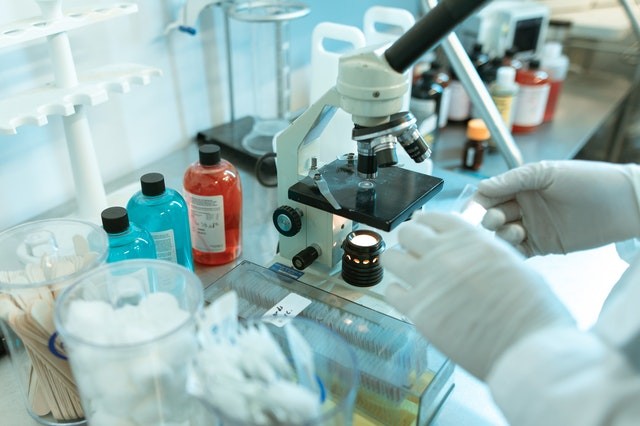UNSW medical researchers have engineered versatile nanoscale machines to allow greater functional range, inspired by how molecules interact in nature.
A report from Phys.org said that to endure the problematic conditions within living organisms, molecular machines must be robustly conducted for nonstop operation over long periods.
At the same time, there is a need for them to adapt to different needs and their changing environment by rapidly exchanging molecular components for the machinery to be reconfigured.
The study authors reported how they designed and made fast exchange molecular machines with stability. They explained that they employed a synthetic biology method to this problem by devising an artificial nanoscopic machine using DNA and protein components.
ALSO READ: Thermoelectric Materials Made Using Novel Synthesis Strategy

Medical researchers have engineered versatile nanoscale machines to allow greater functional range, inspired by how molecules interact in nature.
DNA Nanomachines
According to A/Prof, having the ability to exchange subunits enhances functionality, just as how it is observed in biology. Lee, a researcher t UNSW Schoo of Medicine Sciences, and ARC Center of Excellence in Synthetic Biology.
Together with his team, he engineered molecular machines by folding strands of DNA components into three-dimensional shapes, an approach is known as DNA origami.
The team showed that their DNA nanomachines could carry both DNA and protein cargo and, in general, be compatible with other biomolecules and nanoparticles.
The cargo is binding at multiple areas to the DNA receptor. It can be displaced by new cargo through a competitive-binding process when another cargo is present in the solution.
DNA Replisome
One example of one of the machines of nature that embodies a paradox of stability and fast exchange is a cellular machine that's making copies of DNA, also known as the DNA replisome.
As specified in the study published in the ACS Nano journal, the competitive exchange mechanism utilized by the replisome to simultaneously attain the contradicting properties was suggested in earlier research.
Lee and his team have now brought this philosophy to life using DNA nanotechnology and protein engineering. He said this is the first synthetic system to use the so-called "multi-site competitive exchange principle."
Other mechanisms have been reported, conferring the dual properties of durability and fast exchange, although the dichotomy has not been plausible with other biomolecules.
Strand Exchange
Professor Lee said that all molecular machines synthesized with the use of DNA nanotechnology are actuated by a DNA strand's exchange, although swapping only DNA is a bit restricting.
The team's findings have expanded the functional complexity of DNA nanotechnology. In connection to this, Lee said he believes there is a bounty of knowledge in nature for nanotechnology researchers to tap into.
Rapid exchange, he added, and maintaining strong stability appear to be two incompatible states, yet, there are many of the nanoscale machines of nature that behave in this manner. Essentially, the field of DNA nanotechnology is considered to be still in its infancy, a similar Nanowerk report said.
Autonomous nanomachines inspired by nature @acsnano https://t.co/qC79DKxHlN
— Phys.org (@physorg_com) March 23, 2022
While there are numerous design challenges to overcome for scientists to be able to realize the full potential of molecular machines, the capacity to devise machines that can function autonomously and adjust to changes in the environment through the replacement of different biomolecules is a big step toward an array of applications from developing smart materials to targeting the therapeutic drugs' delivery into deceased cells, and many more.
Related information about nanomachines is shown on Funnywes's YouTube video below:
RELATED ARTICLE: Graphene-based supercapacitor has the potential to power wearable electronics
Check out more news and information on Nanotechnology in Science Times










!['Cosmic Glitch' in Einstein's Theory of General Relativity Could Be Explained in This New Scientific Tweak [Study]](https://1721181113.rsc.cdn77.org/data/thumbs/full/53435/258/146/50/40/cosmic-glitch-in-einsteins-theory-of-general-relativity-could-be-explained-in-this-new-scientific-tweak-study.jpeg)



